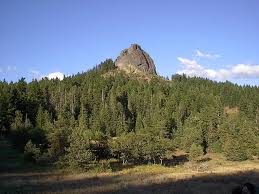Introduction
Have you ever wondered what makes the Siskiyou grapevine so special? Well, you’re in the right place! This article will dive deep into the world of Siskiyou grapevines, exploring their history, cultivation practices, and significance in viticulture. Whether you’re a wine enthusiast or simply curious about grapevines, this guide has something for you.
What is the Siskiyou Grapevine?
The Siskiyou grapevine is a variety of grapevine native to the Siskiyou region, known for its unique characteristics and contribution to the wine industry. These grapevines thrive in the specific climate and soil conditions of the region, producing grapes that are highly sought after for wine production.
Importance of Grapevines in Viticulture
Grapevines are the backbone of viticulture, the science, and practice of growing grapes. They are essential for producing the diverse range of wines enjoyed by people around the world. The Siskiyou grapevine, in particular, plays a crucial role in the viticulture of its region, contributing to the local economy and culture.

History of the Siskiyou Grapevine
Origins and Development
The Siskiyou grapevine has a rich history that dates back to the early settlers of the region. These settlers recognized the potential of the local grapevines and began cultivating them for wine production. Over time, the Siskiyou grapevine has evolved, adapting to the unique environmental conditions of the region.
Historical Significance in the Region
Throughout history, the Siskiyou grapevine has played a significant role in the development of the local wine industry. It has become a symbol of the region’s agricultural heritage and continues to be a vital part of the local economy.
Geographical Significance
The Siskiyou Region
The Siskiyou region, located in Northern California and Southern Oregon, is known for its diverse landscapes and unique climate. The region’s geographical features create the perfect environment for cultivating grapevines, with its varied terrain and microclimates.
Climate and Soil Conditions
The climate of the Siskiyou region is characterized by hot summers and cool winters, providing ideal growing conditions for grapevines. The soil is rich in minerals, which contributes to the distinctive flavor profile of the grapes produced in this region.

Varieties of Siskiyou Grapevine
Common Varieties
The Siskiyou grapevine includes several common varieties, such as Cabernet Sauvignon, Chardonnay, and Pinot Noir. Each variety has its own unique characteristics, making them suitable for different types of wines.
Unique Characteristics
What sets the Siskiyou grapevine apart is its ability to produce grapes with intense flavors and high sugar content. These characteristics make the grapes ideal for wine production, resulting in wines that are rich and full-bodied.
Cultivation Practices
Planting Techniques
Successful cultivation of Siskiyou grapevines begins with proper planting techniques. The vines should be planted in well-drained soil and positioned to receive maximum sunlight. Spacing the vines correctly is also crucial to ensure adequate air circulation and reduce the risk of disease.
Seasonal Care and Maintenance
Taking care of Siskiyou grapevines involves regular pruning, fertilizing, and monitoring for pests and diseases. Pruning helps to maintain the shape of the vine and encourage healthy growth, while fertilizing provides the necessary nutrients for optimal fruit production.

Pest and Disease Management
Common Pests
Like all grapevines, the Siskiyou grapevine is susceptible to various pests, including grapevine moths, aphids, and spider mites. These pests can cause significant damage to the vines and reduce grape yields.
Disease Prevention and Treatment
Diseases such as powdery mildew and downy mildew are common issues for grapevines. Preventative measures, such as proper spacing, regular monitoring, and the use of fungicides, can help protect the vines from these diseases.
Harvesting the Siskiyou Grapevine
Best Time to Harvest
The optimal time to harvest Siskiyou grapevines is when the grapes have reached their peak ripeness. This typically occurs in late summer to early fall, depending on the variety and growing conditions.
Harvesting Methods
Harvesting can be done manually or mechanically, depending on the size of the vineyard and the preference of the grower. Manual harvesting involves hand-picking the grapes, while mechanical harvesting uses machines to shake the grapes from the vines.
Wine Production from Siskiyou Grapevine
Wine Making Process
The process of making wine from Siskiyou grapevines involves several steps, including crushing the grapes, fermenting the juice, aging the wine, and bottling the final product. Each step is crucial to developing the wine’s flavor and quality.

Popular Wines
Wines made from Siskiyou grapevines are known for their exceptional quality and unique flavors. Popular wines include rich, full-bodied reds and crisp, refreshing whites, each with its own distinct character.
Economic Impact
Contribution to Local Economy
The cultivation of Siskiyou grapevines and the production of wine have a significant economic impact on the region. The wine industry provides jobs, supports local businesses, and attracts tourism, all of which contribute to the local economy.
Employment Opportunities
The grapevine industry offers various employment opportunities, from vineyard workers to wine makers and sales professionals. This diversity of roles helps sustain the local community and provides a stable source of income for many residents.
Sustainable Practices
Organic Farming
Many growers in the Siskiyou region are adopting organic farming practices to produce grapes without the use of synthetic chemicals. This approach not only benefits the environment but also results in healthier, more flavorful grapes.
Eco-Friendly Practices
Eco-friendly practices, such as using renewable energy sources and reducing water usage, are becoming increasingly popular among Siskiyou grapevine growers. These practices help to minimize the environmental impact of viticulture and promote sustainability.
Challenges in Cultivating Siskiyou Grapevine
Environmental Challenges
Climate change and unpredictable weather patterns pose significant challenges to the cultivation of Siskiyou grapevines. Growers must adapt to these changes and find ways to protect their vines from extreme conditions.
Market Challenges
The wine industry is highly competitive, and Siskiyou grapevine growers face challenges in marketing their wines and maintaining profitability. Finding a niche market and building a strong brand can help overcome these challenges.
Future Prospects
Innovations in Viticulture
Advancements in viticulture, such as precision farming and new grapevine varieties, hold promise for the future of Siskiyou grapevines. These innovations can improve yield, quality, and sustainability.
Market Trends
Emerging market trends, such as the growing demand for organic and biodynamic wines, provide opportunities for Siskiyou grapevine growers to expand their market reach and increase sales.

Cultural Significance
Role in Local Festivals
The Siskiyou grapevine plays a central role in local festivals and celebrations, showcasing the region’s rich viticultural heritage. These events attract visitors and promote the local wine industry.
Influence on Local Cuisine
Grapes from the Siskiyou grapevine are used in various local dishes and pairings, adding a unique flavor to the region’s cuisine. Wine and food pairings are a popular attraction for both locals and tourists.
Tourism and the Siskiyou Grapevine
Vineyards and Wineries as Tourist Attractions
Vineyards and wineries in the Siskiyou region are popular tourist destinations, offering visitors the chance to explore the beautiful landscapes and taste the local wines. Wine tours and tastings provide a unique and memorable experience.
Wine Tasting Tours
Wine tasting tours are a great way to experience the best of what the Siskiyou region has to offer. These tours often include visits to multiple wineries, providing a comprehensive overview of the local wine industry.
Conclusion
The Siskiyou grapevine is a vital part of the region’s viticulture, contributing to the local economy, culture, and tourism. Its unique characteristics and high-quality grapes make it a standout in the wine industry. As sustainable practices and innovations continue to evolve, the future of the Siskiyou grapevine looks promising.
FAQs
What is unique about the Siskiyou Grapevine?
The Siskiyou grapevine is unique due to its ability to produce grapes with intense flavors and high sugar content, making it ideal for wine production.
How does the climate affect the Siskiyou Grapevine?
The climate of the Siskiyou region, with its hot summers and cool winters, provides ideal growing conditions for grapevines, contributing to their distinctive flavor profile.
What are the best practices for cultivating Siskiyou Grapevine?
Best practices for cultivating Siskiyou grapevines include proper planting techniques, regular pruning, fertilizing, and monitoring for pests and diseases.
How does the Siskiyou Grapevine contribute to the local economy?
The cultivation of Siskiyou grapevines and wine production provide jobs, support local businesses, and attract tourism, all of which contribute to the local economy.
What are the future prospects for the Siskiyou Grapevine?
Future prospects for the Siskiyou grapevine include advancements in viticulture, such as precision farming and new grapevine varieties, as well as emerging market trends like the demand for organic and biodynamic wines.



